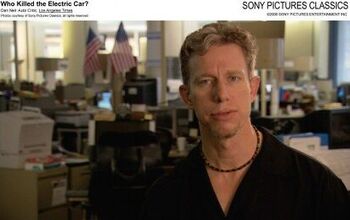Musk Says the Tesla Model S Suspension Controversy is Over

Elon Musk is declaring the controversy that erupted over reports of Tesla Model S suspension failures to be over, done, finished, finito.
The Tesla founder and CEO fired off a string of tweets late Friday, saying that the National Highway Transportation Safety Administration was done looking into the matter, and added that the majority of complaints were found to be fraudulent.
Yesterday, TTAC examined the details of the case that sparked accusations of a serious Model S safety issue and a cover-up on the part of the automaker. The firestorm of controversy, ignited by a Daily Kanban blog post by ex-TTAC editor Edward Neidermeyer, centered on a Pennsylvania man whose 2013 Model S experienced an unusual upper ball joint failure.
A non-disclosure clause in the “goodwill agreement” handed to the owner during the vehicle’s repair process raised even more questions. The NHTSA, which had been contacted by Tesla owners and other individuals, examined the language in the document and announced it was looking into the suspension issue.
While this was going on, Tesla fired back at critics with a lengthy and unusually harsh blog post of its own, denying there was a safety issue and singling out Neidermeyer for his post.
It now looks like Musk wants the final say on the matter. Taking to Twitter last night, he announced, “NHTSA confirmed today that they found no safety concern with the Model S suspension and have no further need for data from us on this matter.”
He then added, “Of greater concern: 37 of 40 suspension complaints to NHTSA were fraudulent, i.e. false location or vehicle identification numbers were used.” Musk then questioned the intentions of those who made false complaints.
Looking into the issue, TTAC’s Mark Stevenson and Bozi Tatarevic found that the non-disclosure agreement, while unusual, was likely unenforceable. The automaker would have a potentially ruinous PR disaster on its hands if it tried to silence consumer complaints.
The suspension failure that led to the controversy looked to be the result of a damaged rubber ball joint boot that allowed water and road salt to enter the ball joint, ultimately leading to its premature failure. The damaged boot remains a mystery — it could have been compromised when it left the factory or damaged when the owner drove his Model S down rutted Pennsylvania roads.

More by Steph Willems
Latest Car Reviews
Read moreLatest Product Reviews
Read moreRecent Comments
- Arthur Dailey 'Ere it's a nice little runner.Actually anyone with my log-in/sign-in name and picture absolutely should not be commenting on this article.
- Arthur Dailey Is the original Legend absolute peak Honda?
- MaintenanceCosts Curb weight of this version is likely north of 4500 pounds. Expect it to feel like a W221 S-Class, not a sporty coupe.
- Parkave231 New Oldsmobiles are in early this year.
- MaintenanceCosts "While there are absolutely exceptions, the days of the super-sleazy used car dealer seem to be behind us here in the States."Citation needed.


































Comments
Join the conversation
OK...Musk, ol buddy...so what was the disclosure in the repair for? It sounds like it implied a legal battle if reported. Enforceable or not...it seems mean spirited. What is the intent of the warning or disclosure?
Very nice of Elon to tell us all that the controversy is over. Because those NDA's his company was asking people to sign still have not, apparently, changed, and it sure looks like it purports to prohibit customers from talking to the press to me. The fact that it does not, in fact, actually work, doesn't really mean that Tesla doesn't wish it would.